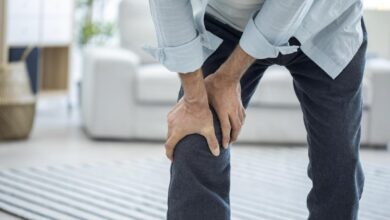
Symptoms And Treatment Options Of Cervical Spinal Stenosis
A narrowing of the spinal canal or the spinal nerve root passages in your neck is cervical spinal stenosis. Your spinal cord or nerves can become compressed when this narrowing happens and cause symptoms such as pain, numbness, tingling and weakness in your spine, shoulders, and extremities. Your doctor can refer to the condition as cervical myelopathy if cervical spinal stenosis causes spinal cord compression.
In their 50s and 60s, most persons who have cervical spinal stenosis are people who may have experienced neck pain for many years.
Symptoms of Cervical Spinal Stenosis
Symptoms and severity differ when spinal nerves are squeezed or pinched in your neck, and pain, fatigue, tingling, and other neurological symptoms may spread to your shoulders, arms, and legs. The medical term for nerve-related symptoms that migrate from your neck into your arms is cervical radiculopathy.
Depending on the nerve or nerve(s) compressed, cervical radiculopathy can affect sensation and function in various areas of your upper body. For instance, bicep weakness and decreased bicep reflex are associated with radiculopathy at C6 (the sixth pair of nerve roots in your cervical spine). C7 radiculopathy is, on the other hand, associated with triceps weakness.
Although select nerves or groups of nerves in your neck may be affected by spinal stenosis, more advanced cases include narrowing the spinal canal that compresses your spinal cord. The spinal cord’s compression in your neck is called cervical myelopathy, and it can be a severe disorder that causes significant symptoms, such as balance issues and walking difficulties.
Diagnosis Of Cervical Spinal Stenosis
Your doctor conducts a physical and neurological examination after examining your medical history and symptoms. For medical purposes, to duplicate your symptoms, you might be required to bend or twist your neck (Spurling’s manoeuvre). Your doctor will check your muscle coordination, reflexes and watch you walk to determine your gait and balance. To determine function, sensation, and equilibrium, there are several different types of tests.
A first-line imaging examination that can show structural changes, such as disc height reduction, bone spurs and spondylosis, is simple x-rays. Other imaging tests may be required to examine the spinal cord, nerves, and other soft tissues, such as a magnetic resonance imaging (MRI) scan. Imaging tests help the doctor confirm and pinpoint the cause of spinal stenosis.
Cervical stenosis treatment options
The majority of persons with spinal stenosis do not require surgery. There are many options for certain people, and nonsurgical therapies effectively alleviate and manage pain and symptoms. One therapy may be prescribed by your doctor or combined with other forms of treatment. There are different types of drugs and medicines, passive and active physical therapies, and spinal injections, effective for some patients.
If nonoperative procedures are unsuccessful or symptoms escalate, which may occur rapidly or slowly over time, spine surgery may be suggested. There are cases where the first treatment is surgery, such as acute herniation of the disc, fracture, or severe neurological deficit (cervical myelopathy).
Cervical Stenosis Surgical Procedure
Surgery aims to relieve pain, which is called decompression, from the spinal cord or nerves. There are various forms of decompression procedures for the treatment of spinal stenosis affecting the spinal canal (spinal cord, central spinal stenosis) or neural foramen (nerves; lateral spinal stenosis). Instrumentation and fusion are often conducted to stabilize the cervical spine following spinal decompression. Alternatively, such patients may be candidates for cervical arthroplasty, so-called motion sustaining spinal implants.



